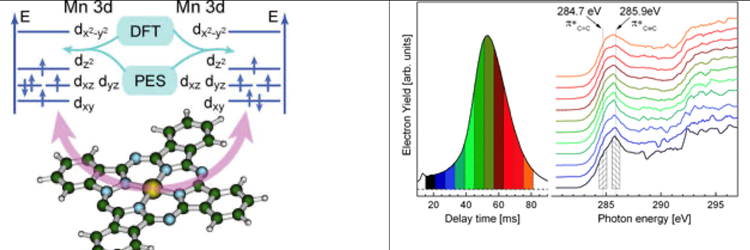

The Gas Phase is operated by a Research Team (Sincrotrone Trieste+CNR-IOM&ISM), and is the only beamline at Elettra specifically devoted to research on gaseous systems.
The Gas Phase Photoemission (GAPH) beamline was born as a joint venture between the Istituto Nazionale di Fisica della Materia (INFM), the Consiglio Nazionale delle Ricerche (CNR) and the Sincrotrone Trieste scpA (ST). Presently the research team partecipants are from CNR (IOM&ISM) and Sincrotrone Trieste.
The Gas Phase Photoemission beamline is specifically devoted to research on gaseous systems. It offers a multi-technique approach for investigation of low density matter in the photon energy range 13-900 eV from an high intensity tunable undulator and a high resolution monochromator (E/E between 10.000 and 60.000)
The Gas Phase Photoemission beamline is specifically devoted to research on gaseous systems.
It offers a multi-technique approach for investigation of low-density matter in the photon energy range 13-900 eV from a high intensity tunable undulator and a high-resolution monochromator (E/DE between 10.000 and 60.000)
The beamline is presently equipped with more distinct interchangeable apparatuses, for:
Users can bring their own apparatus to perform experiments, provided that it is compatible with the beamline requirements.
Instrumentation:Research Team (GdR) personnel collaborated in the developing of part of the experimental apparatus available for experiments, in particular all not dedicated to pure photoelectron spectroscopy have been developed in house or heavily modified to perform experiments designed for specific target.
Software: The acquisition programs of the beamline end stations has been developed in house.
The Gas Phase Photoemission (GasPhase) beamline was established at Elettra, as a joint venture between the Istituto Nazionale di Fisica della Materia (INFM), the Consiglio Nazionale delle Ricerche (CNR) and the Elettra - Sincrotrone Trieste scpA (ST). At present it is operated by a Research Team (ST+CNR ISM and CNR-IOM). It is the only beamline at Elettra specifically devoted to research on gaseous systems.
GasPhase offers a multi-technique approach for investigation of electronic properties low density systems (free atoms, molecules, clusters and short-lived species) in the photon energy range 13-900 eV
The broad energy range, the high resolving power and flux together with the purpose-built end-stations, make this facility ideal for investigating the spectroscopy and dynamics of basic processes like inner-shell and multiple excitations and ionization, molecular fragmentation, as well as for characterizing key processes relevant to several areas of science and technology (for example atmospheric chemistry, material science and biomedical sciences).
Research in “low density matter” focuses on spectroscopy and dynamics of atoms, molecules and clusters, as well as on radiation-matter interaction. Investigations aim at acquiring information on electronic structure, reactivity and chemical-physical behavior of target systems used in different areas of basic and applied research: biology, astrophysics, environment and cultural heritage. They are also the basis for the modeling of atmospheric chemistry, interstellar space and biochemistry. Special attention is devoted to the development of new methodologies, both theoretical and experimental, and of new instrumentation for the investigation of low-density systems.
Several classes of elementary processes under investigation:
INFRAIA, AHEAD2020, 2020-2024
FOE -MIUR, Progetto EurofelMIUR Roadmap ESFRI , 2015-2021
MIUR PRIN 2017, POssIBLE, 2020-2022
CERIC- ERIC, DyNaChiro, 2018-2021